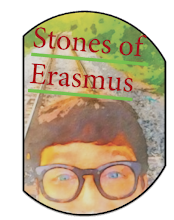If you want to teach philosophy to young people, use this lesson plan to introduce students to Plato’s theory of reality. I was inspired to create this resource when I retold the story of Plato’s Allegory of the Cave (from The Republic) in plain language. In the tale, one prisoner wakes up and questions what is real and what is not. Let your class read the narrative, then use the comprehension and discussion activities to explore Plato’s metaphysics.
This resource is optimized for distance learning. It includes an editable Google Docs link so you can adapt it for Google Classroom or any LMS.
What’s Inside
Essential Question: How do I know what is really real?
- Complete text of the story
- Retold in student-friendly English—ideal for read-alouds or paired reading.
- 15 Reading Comprehension Questions
- Perfect for homework or a flipped-classroom assignment.
- 6 Discussion Questions
- Great for group work or a carousel activity—get students moving!
- Two-World Theory Chart
- Graphic organizer to visualize Plato’s worldview.
- 3 Google Forms Assessments (with answer keys)
- Suggested Lesson Plan—step-by-step guidance
- Annotated Bibliography for extension and research projects
Suggested Uses
- Humanities: Ancient Greece
- World History: History of Ideas
- Literature Studies
- Ethics — see it in action with 8th-graders here
- Introduction to Philosophy
- Advisory or SEL: Truth, Appearance vs. Reality
© 2025 Stones of Erasmus






